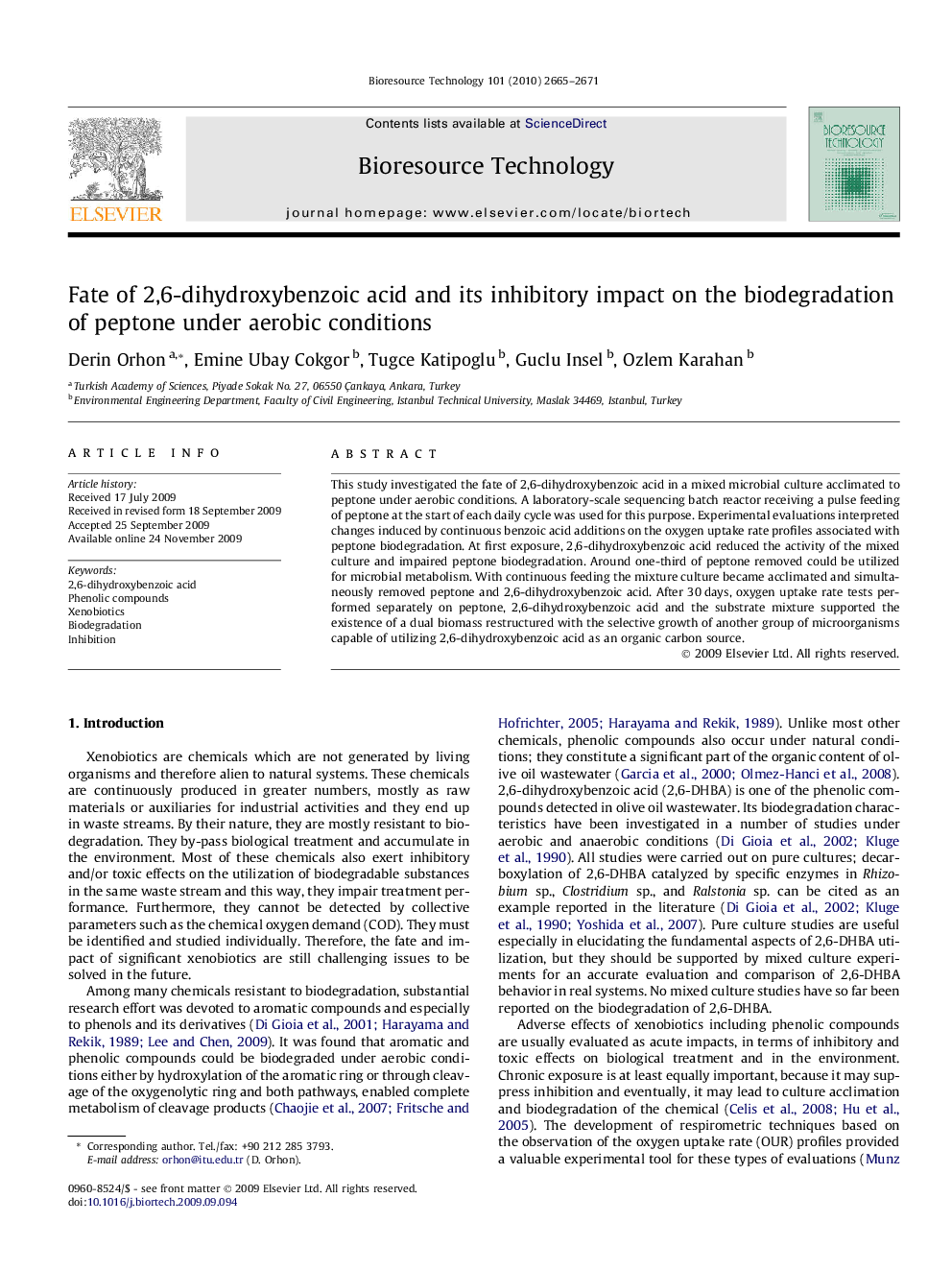| Article ID | Journal | Published Year | Pages | File Type |
|---|---|---|---|---|
| 683031 | Bioresource Technology | 2010 | 7 Pages |
This study investigated the fate of 2,6-dihydroxybenzoic acid in a mixed microbial culture acclimated to peptone under aerobic conditions. A laboratory-scale sequencing batch reactor receiving a pulse feeding of peptone at the start of each daily cycle was used for this purpose. Experimental evaluations interpreted changes induced by continuous benzoic acid additions on the oxygen uptake rate profiles associated with peptone biodegradation. At first exposure, 2,6-dihydroxybenzoic acid reduced the activity of the mixed culture and impaired peptone biodegradation. Around one-third of peptone removed could be utilized for microbial metabolism. With continuous feeding the mixture culture became acclimated and simultaneously removed peptone and 2,6-dihydroxybenzoic acid. After 30 days, oxygen uptake rate tests performed separately on peptone, 2,6-dihydroxybenzoic acid and the substrate mixture supported the existence of a dual biomass restructured with the selective growth of another group of microorganisms capable of utilizing 2,6-dihydroxybenzoic acid as an organic carbon source.
